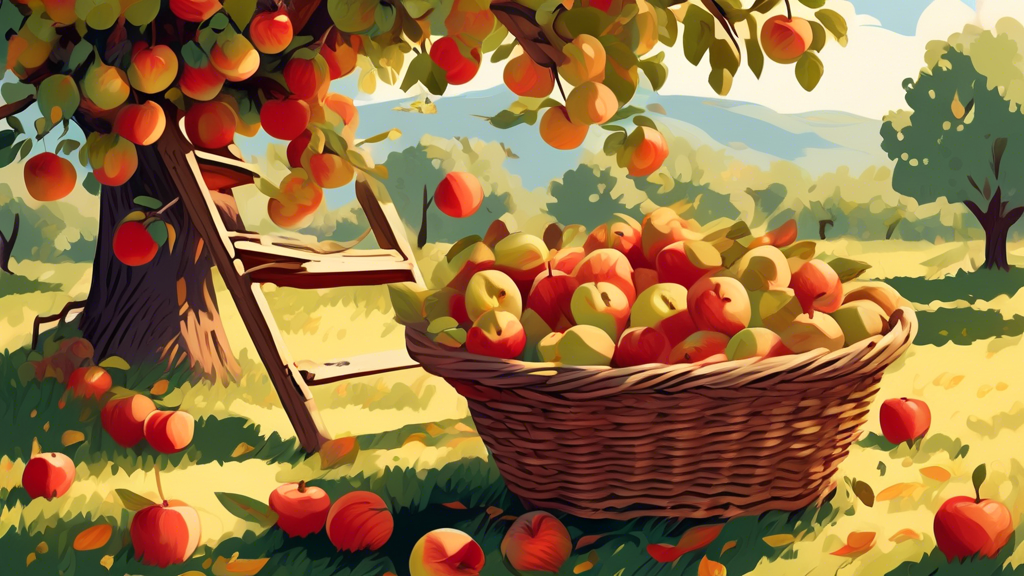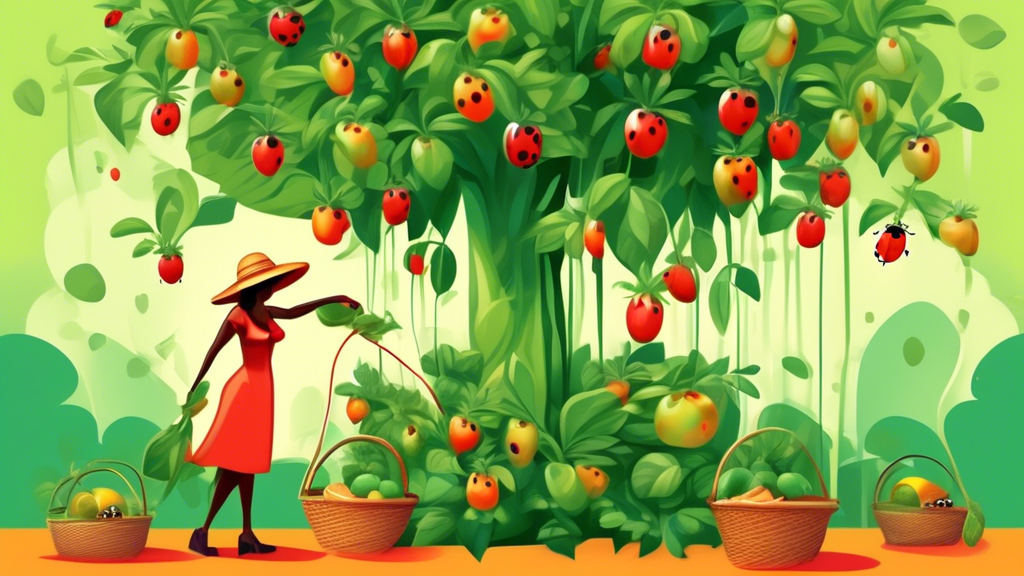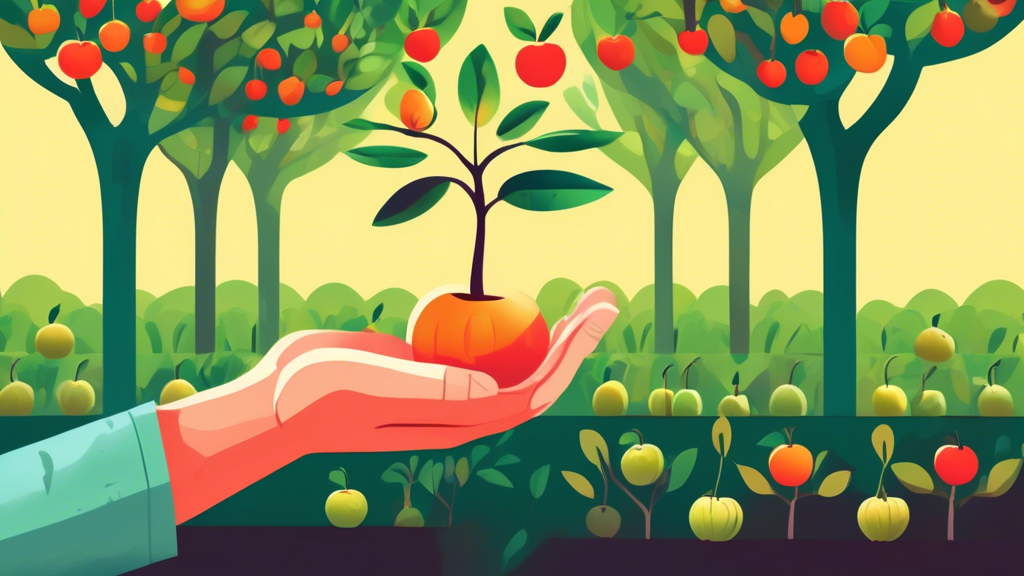
Your Ultimate Seasonal Care Guide for Fruit Trees: What to Do and When
Dreaming of a bountiful harvest but frustrated by inconsistent results? This year-round roadmap will guide you through the essential tasks for each season, transforming your orchard into a productive paradise.
Why a Seasonal Approach is Non-Negotiable
The Hidden Reason Your Tree Isn’t Fruiting
Many gardeners face the disappointment of a fruitless tree. The culprit is often a simple mistake in timing. Pruning at the wrong time can remove the very buds that would become fruit, while missing the window for pest control can lead to infestations that destroy blossoms.
Syncing with the Tree’s Natural Cycle
Performing tasks out of sync with your tree’s dormancy, growth, and fruiting cycles is not just ineffective—it can be harmful. For instance, pruning stone fruits like peaches and plums during wet weather can invite devastating fungal diseases into the fresh cuts.
Winter (Dormant Season): The Foundation for Success
Late Winter Pruning: Shaping for Sunlight and Airflow
Pruning while the tree is dormant allows you to shape its structure without stressing it. The goal is to create an open canopy that allows sunlight to penetrate and air to circulate, which is crucial for fruit ripening and disease prevention.
| Training Method | Best For | Key Characteristic |
|---|---|---|
| Espalier | Small spaces, walls | Tree is trained flat against a support in a formal pattern. |
| Open Center | Peaches, nectarines, plums | Creates a vase-like shape with a clear center. |
Unique Insight: Learn to distinguish between fruit buds and leaf buds. Fruit buds are often fatter and rounder, while leaf buds are thinner and more pointed. Knowing the difference helps you avoid accidentally pruning away your entire harvest.
Dormant Oil Spraying: A Proactive Pest Solution
Applying horticultural oil in late winter, when the tree is bare but before buds swell, suffocates overwintering pests like scale insects and aphid eggs. This single action can drastically reduce pest problems for the entire growing season.
Spring (Bud Break & Bloom): Protecting Potential
Frost Watch: How to Save Your Blossoms
A late frost can wipe out a entire crop in one night. Be prepared to protect tender blossoms by covering trees with frost cloth or even running a sprinkler lightly at the base of the tree during the coldest part of the night; the freezing water releases a surprising amount of heat.
Spring Feeding: Fueling Growth and Fruit Set
As the tree wakes up, it needs energy. A balanced, slow-release fertilizer applied in early spring supports both new growth and the development of fruit. Always test your soil first, as the right pH (typically slightly acidic) is just as important as the nutrients themselves.
The Heartbreak and Necessity of Thinning
It feels wrong to remove perfectly good young fruit, but it is one of the most critical tasks for a quality harvest. Thinning prevents the tree from overexerting itself, which can lead to broken limbs and a crop of tiny, inferior fruit. It ensures the tree’s energy is focused on fewer, superior fruits.
Summer (Fruit Development): Nurturing the Harvest
Smart Watering: Deep vs. Frequent
Consistent, deep watering is key to juicy fruit. Shallow, frequent watering encourages weak surface roots. A deep soak encourages roots to grow downward, creating a more drought-resistant tree and preventing common issues like fruit split.
Summer Pest & Disease Patrol
| Control Method | Pros | Cons |
|---|---|---|
| Organic (Neem Oil, Insecticidal Soap) | Safe for pollinators and beneficial insects, less environmental impact. | Often requires more frequent application. |
| Conventional Chemicals | Potent, longer-lasting control. | Can harm beneficial insects and requires careful timing to avoid contaminating fruit. |
Unique Insight: Build a “Beneficial Insect Hotel” near your orchard. By providing habitat for ladybugs, lacewings, and parasitic wasps, you enlist a natural army that will continuously patrol for and consume common pests like aphids and mites.
Supporting Heavy Branches
As fruit swells, branches can become dangerously heavy. Use wooden props or soft ties to gently support laden limbs and prevent them from snapping under the weight of your success.
Fall (Harvest & Preparation): Winding Down and Preparing
The Final Harvest and Proper Storage
Knowing when to harvest is an art. Color, ease of twisting from the branch, and aroma are key indicators. Once picked, most tree fruits store best in a cool, humid environment—a cellar or a crisper drawer in your refrigerator.
The Most Overlooked Step: Sanitizing Your Orchard
Cleaning up fallen leaves, fruit, and debris in the fall is your single most effective defense against next year’s pests and diseases. Many fungi and insect larvae overwinter in this material. Important: Do not compost this debris, as most home compost piles don’t get hot enough to kill these pathogens.
Fall Planting: A Head Start for Roots
In many climates, fall is the ideal time to plant new bare-root fruit trees. The cool air reduces stress on the top of the tree, while the still-warm soil encourages root establishment throughout the winter, giving the tree a vigorous head start for spring.
Your Fruit Tree Care FAQs Answered
When is the absolute best time to prune my apple/peach/pear tree?
| Tree Type | Best Pruning Time |
|---|---|
| Apple & Pear | Late Winter (dormant season) |
| Peach & Nectarine | Early Spring, as buds begin to swell |
| Cherry & Plum | Late Spring/Summer after harvest to avoid disease |
I missed a seasonal task. What should I do?
Don’t panic. Nature is resilient. For most tasks, it’s better to do them late than never. For example, if you missed dormant pruning, you can still prune in early summer, but be more conservative. Avoid heavy fertilization or pruning in late summer/fall, as this can stimulate tender new growth that will be killed by frost.
Can I use the same fertilizer for all my fruit trees?
While a balanced fertilizer (e.g., 10-10-10) is a good general-purpose choice, different trees have nuanced needs. Citrus trees, for instance, are heavy feeders and require more micronutrients like iron and zinc. Pome fruits (apples, pears) often benefit from a soil amendment with boron for better fruit set.
Why are my fruit trees blooming but not producing fruit?
This is often a pollination issue. First, determine if your tree is self-fertile (can pollinate itself) or needs a cross-pollinator partner of a different variety. Even self-fertile trees will produce more fruit with a partner. Secondly, ensure pollinators like bees can access your garden. Avoid spraying pesticides during bloom time.
Conclusion: Your Year-Round Journey
By following this structured seasonal guide, you are no longer just hoping for a harvest—you are actively cultivating it. Bookmark this page and revisit it as the seasons turn. With a little knowledge and timely action, you can turn your orchard dreams into a delicious, tangible reality.






